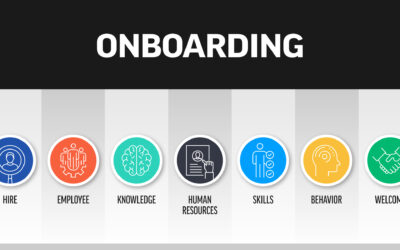Independent agents have relationships with various insurance carriers. Each carrier has its own set of tools and resources to help agents educate their clients about what will happen when they file a claim—before, during and after. By working together, agents and their carriers can help to ensure that the claim process goes as smoothly as possible for their insureds. PIA Magazine spoke with Jim Wucherpfennig, the head of property claim at Travelers, to discuss his company’s claim process and best practices for agents, which they can use to better their relationships with all their carriers.
Jim, thanks for taking the time to chat with us about the claim process from the insurance carrier’s perspective. First—while all claims are important to those affected by them—in the claim process are all claims equal? If not, how do they differ?
We triage and assign claims based on severity. For example, from a property perspective, we manage minor damage claims like loose siding or shingles, all the way up to major catastrophes that result in total losses.
When we deal with major catastrophes, we combine policy information with highly accurate satellite maps and aerial images. Then, we can estimate damage with a high degree of accuracy—even before insurance adjusters are able to enter the area. This helps our claim professionals start the claim process earlier and help our customers faster.
Travelers has made significant investments in artificial intelligence applications to help improve the customer experience and resource deployment after catastrophic property events like wildfires and wind/tornados. For wildfire damage, we use high-resolution aerial imagery coupled with a proprietary deep machine-learning model. By using imagery from before and after a fire—in concert with our proprietary AI model—we can identify which customers’ houses or businesses are damaged. In certain cases, such as the recent Colorado fires, we were able to assist some customers before they had a chance to return to their homes and assess the damage.
In the case of wind severity damage, we leverage the same functionality from our wildfire solution to determine potential losses from events like tornadoes and hurricanes. Our claim team uses this information to understand where to deploy resources needed to assist customers with the damage assessment process, which means we use only Travelers employees to adjust claims. This tool—in combination with our right-touch and technology tools and platforms—enabled us to close over 90% of our personal insurance claims within 30 days during 2021.
For simple claims, we usually can manage the entire process virtually—using apps and mobile technology to inspect and evaluate the damage and facilitate payment—often in the same day.
The above illustrates a basic tenet: Being able to determine severity allows us to deploy and assign the right claim professional, with the proper expertise, to the right claim.
Most people think the claim process starts when a client picks up the phone and calls his or her agent after something has happened, but can you talk about what should be happening before a claim even happens?
We like to take a proactive approach to claim management—helping inform our customers about potential risks and how to take the proper steps to avoid them.
We have a robust set of resources[1] that discuss some of the most typical claim situations—hurricanes, tornados, wildfires, etc.—and what customers can do before a claim even happens. Our agents can use these resources to help better educate their clients.
Once a claim occurs, can you tell us about the ideal claim process? And, how an agent can help?
Like our customer engagement strategies, we also make available the same resources to our distribution partners. Usually, our agents have the most intimate knowledge about our customers, so we want to empower them and to put them in the best possible position to communicate with their clients.
We also have rolled out a tool that provides agents and brokers with before-and-after photos of areas affected by disasters. Searchable, high-resolution aerial images often are available within one or two days after a catastrophic event—normally before anyone can access the location physically. This enables agents and brokers to notify customers quickly about the condition of their property and begin the claim process when necessary.
We give agents tools and resources that they can share directly with their customers and even content they can repurpose for digital outreach—like through their own social-media channels.
Ideally, we want agents to encourage customers to report losses directly to us. That direct loss reporting is the first step in helping us assign the right resource to a claim.
Based on the severity, we can use our broad suite of digital tools to help facilitate the claim process—including inspection, payment, and resolution. For example, with the recent Colorado wildfires, nearly 80% of our payments were made electronically—getting funds like additional living expenses and other advancements to customers more quickly—sometimes in the same day.
Does the process you’ve outlined in the previous answer change depending on the type of claim? If so, how?
Yes. During major catastrophe events, we can activate our catastrophe response teams who can assist local office staff to directly assist customers.
These resources provide us with the ability to respond rapidly to a disaster anywhere in the country. When needed, we can add resources from our catastrophe response team and reposition employees from around the country so we’re able to quickly connect with our customers—even during times of simultaneous catastrophe events.
We have claim professionals with a broad array of specialties, too—from claim professionals with contents expertise, to major-case claim professionals who are trained to understand some of the most complex claim situations—like those involving major property damage or total losses.
Are there any hacks that insurance agents should know about when it comes to the claim process?
Every carrier has its own resources, and agents should take advantage of them. Our partners can tap into our customer resources and not feel compelled to create their own content. This co-branded content can help agents stay nimble, and be in the driver’s seat and help best manage the relationship with the customer.
From a property perspective, agents can leverage Travelers’ vast partner network to help customers further. Travelers has partnered with a company with a digital platform, which allows customers to communicate with reputable contractors in their area, easily select the best contractors for their needs and track key milestones during the repair process. Partnerships like these help us give our customers an even more transparent and convenient process.
How would you advise an agent who may be filing his or her first claim with an insurance company?
Get to know your local claim team and the type of resources they have that can help you. Learn about your carriers and their digital capabilities and direct-loss reporting options. These tools can help agents give the best and most timely service to their customers.
We know that customers have frequent questions about whether they should even file a claim. That’s why Travelers has a loss consultation process. Our loss consultants are trained, experienced insurance professionals who understand the claim process and who can provide a preliminary assessment of damage. These claim professionals are supported by data, analytics and technology that help them offer valuable information to policyholders. During a consultation, the consultant can view a policyholder’s policy details and history. This allows the consultant to explain the policyholder’s potential coverage and any other relevant policy information accurately. These consultants can help policyholders assess the appropriate actions they can take after a loss.
Do you have any advice for the veteran agent who has filed numerous claims throughout his or her career?
Customers are more informed than they’ve ever been, and they are becoming more digitally savvy quickly. Agents who stay ahead of the technology curve can remain relevant and be in the best position to help facilitate the right dialogue between the customer and the carrier.
How can working together during the claim process strengthen the relationship between the agent and the carrier? How does this benefit the client?
The better the claim process, the better the customer experience. That can translate into a better overall experience for the carrier, the agent, and the customer.
Travelers has several digital capabilities that agents can discuss with customers that are designed to facilitate a more frictionless claim experience. For example, Travelers has partnered with a company that assists in assessing property damage. It converts smartphone photos of any property into an accurate 3D model, gathering precise measurements of a building’s exterior, including its roof, siding and windows. This allows Travelers claim professionals to inspect damages without the risks that come with climbing ladders, and policyholders can use the program to submit their information without having to schedule an on-site inspection.
In addition, Travelers uses drones to inspect roofs of residential and commercial properties in everyday claim situations, as well as in response to catastrophes. This helps our customers recover from losses more quickly by expediting roof inspection, payment and repair. Drone use also improves the safety of our field claim and risk control professionals by reducing the need to climb roofs and enter potentially hazardous areas. Drones also increase the effectiveness of damage assessments by making it possible to see more, faster and go places that were previously inaccessible.
In sum, if the customers have positive claim experiences, then most likely, they will view their agents as a trusted business partner and will more than likely recommend their agents to friends and family.
The carrier can benefit too, because if the carrier processes claims in a timely way, the agent is more likely to view the relationship positively and potentially place more business with that carrier.
Final thoughts?
For many customers, they may go their entire lives without ever having to file an insurance claim. We understand the process can be stressful and is sometimes emotional—especially in catastrophic situations that involve major damage.
Understanding coverages is important. Customers should evaluate their policies regularly and assess if any of their needs have changed—then talk to their agents to make sure they have the right coverages in place. The last thing a customer wants to have happen during the claim process is to discover that he or she is underinsured or perhaps not covered at all for a particular loss.
Agents need to work with their customers beforehand, so they understand that they need to have their information ready—names, policy information, contact information, date of loss and description of what happened—which is a critical part of the claim process. In addition, it is helpful to have receipts and other documentation related to the claim.
Finding the right service provider to help make repairs also is vital. This is the customer’s choice, but we want to help them make the most informed decision.
Being informed and maintaining communication throughout the process is key—for the agent, the carrier and the insured.
This article originally appeared in the March 2022 issue of PIA Magazine.
[1] travl.rs/3I4vT3U
Jaye Czupryna is publications manager for PIA Northeast and editor-in-chief of PIA Magazine. She started her career in public relations, and she has been with PIA for more than 20 years. She has overseen PIA Northeast’s various publications, including the award-winning magazine since 2009. Jaye graduated cum laude from Siena College where she earned her Bachelor of Arts Degree in English Communications.







